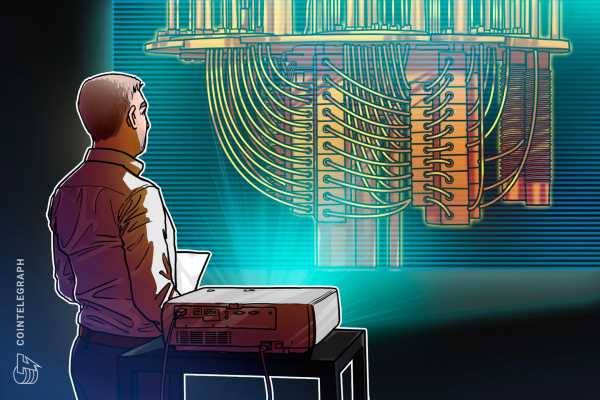Quantum miners would yield ‘massive’ energy savings for blockchain: Study
A pair of scientists from the University of Kent’s School of Computing in the United Kingdom recently conducted a study comparing energy consumption rates for current ASIC-based miners to proposed quantum-based solutions.
According to the team’s preprint research paper, the systems utilizing quantum computing demonstrably outperformed standard mining rigs in energy efficiency:
“We show that the transition to quantum-based mining could incur an energy saving — by relatively conservative estimates — of about roughly 126.7 TWH, or put differently the total energy consumption of Sweden in 2020.”
Bitcoin mining operations alone consumed more than 150 terawatt hours annually (as of May 2022), per the paper, putting into perspective the potential impact the proposed quantum-based systems could have.
The pair’s conclusions were based on experiments comparing three different quantum mining systems to an Antminer S19 XP ASIC miner.
The quantum mining devices were split between a system featuring a single layer of fault tolerance, another one with two layers of fault tolerance and one without any dedicated error-correction features.
As the researchers point out, blockchain mining is one of the few areas of quantum computing where error correction isn’t such a big deal. In most quantum functions, errors create noise that functionally limit a computing system’s ability to produce accurate computations.
In blockchain mining, however, success rates with state-of-the-art classical systems are still relatively low. Per the research paper, “A classical Bitcoin miner is profitable with only a success-rate of about 0.000070%.”
The researchers also note that, unlike classical systems, quantum-based systems can actually be fine-tuned over time for increased accuracy and efficiency.
Related: How does quantum computing impact the finance industry?
While quantum computing technology is still considered to be in its infancy, the very specific problem of blockchain mining doesn’t require a full-service quantum computing solution. As the researchers put it, “a quantum miner is not, and need not be, a scalable, universal quantum computer. A quantum miner need only perform a single task.”
Ultimately, the researchers conclude that it should be possible to build miners using existing quantum technologies that demonstrate quantum advantage over classical computers.
Despite the potential energy savings, it bears mention that the researchers focused on a type of quantum computing system called a “noisy intermediate-scale quantum” (NISQ) system.
According to the preprint paper, quantum miners should demonstrate “massive” energy savings at a size of around 512 quantum bits, or “qubits” — a term somewhat analogous to classical computing bits.
Typically, however, NISQ systems only operate with about 50-100 qubits, though there doesn’t appear to be an industry standard.
While the energy savings might be feasible, the costs of building and maintaining a quantum computing system in the 512 qubit range have, traditionally, been prohibitive for most organizations.
Only D-Wave and IBM offer client-facing systems in the same range (D-Wave’s D2 is a 512-qubit processor, and IBM’s Osprey weighs in at 433), but their architectures differ so greatly that comparisons between their qubit counts are ostensibly meaningless.
Source: Read Full Article




